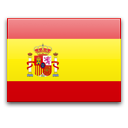Background

To understand the colonial cities of Latin America, we have to study their plazas, from which the central square known as the Plaza Mayor is usually distinguished. And what better way to start this theme with Plaza Herrera in Panama, where one of our tours ends.
Visit Plaza Herrera! Book our tours here!
The plazas in America were the authentic compendium of the city because, in these, everything happened. Until the construction of the French Canal began, the plazas located in Casco Antiguo were clear of trees and unpaved so that they could provide the social function of a theater of entertainment and collective festivities.
The Plaza was renowned for bullfights, but before the end of the 19th century, the bullfighting festival was assigned to the future Plaza Herrera, an empty lot that arose from the fire of 1781 that devastated the old neighborhood of San José. As the government authorities decided against rebuilding, this space became a natural plaza initially known as Plaza of Triumph, where parties, bullfights, and celebrations of military victories took place.
.
Homage to a Nacional Hero

Since 1887 it ceased to be called the Plaza of Triumph to become the Plaza Herrera. The practice of bullfighting became banned in the first decade of the Republic. Plaza Herrera is then assigned a new function different from the Cathedral's: to serve as a fabulous scenic setting for a sculptural movement dedicated to honoring the memory of a national hero. That was different from the Cathedral Plaza, which was for the very solemn acts ordered by the king, the local ruler, and the archbishop. The equestrian statue of the general honored in the Plaza arrived from France.
The Plaza owes its name to the prominent Panamanian General Tomas Herrera, an important figure in Panama's independence struggle from Spain. He organized a battalion of more than 1500 soldiers and fought in Ayacucho and Junín. He was governor of Panama when the country was a part of Colombia. Tomas Herrera was also one of the first, if not the first, that created the movement to separate Panama from Colombia. He died in Bogotá from a sniper's bullet in 1854.
The maximum splendor of the square occurred at the beginning of the 20th century, and around it, new real estate projects were developed, such as the La Reformada building, the first of more than four floors in the old city.




Leave a comment